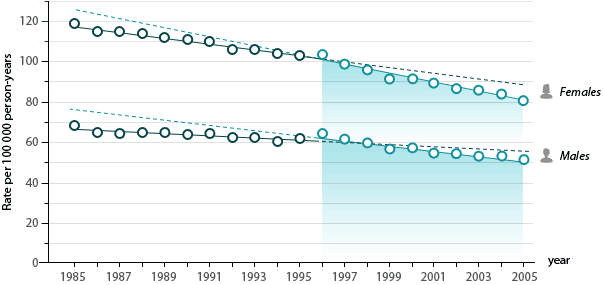
Epidemiology
Chapter 2: Different types of epidemiological studies
3. Types of epidemiological studies
Ecological studies
3.1 Descriptive studies (continued)
Example a descriptive study that is an ecological study (b) : a study on the trends in hip fractures in Canada (Leslie, JAMA 20091)
The study of an ecological trend taken from records of hospitalization between 1985 and 2005 that was registered in the Canadian Institute health database.
The data for all patients hospitalized principally for a hip fracture (570,872 admissions) was analyzed.
Since the early 90s, a trend has been observed in Western countries toward a decrease in the incidence of hip fractures, more especially in women.
1 Leslie WD, O'Donnell S, Jean S, et al. Trends in Hip Fracture Rates in Canada. JAMA. 2009;302(8):883-889. doi:10.1001/jama.2009.1231.
